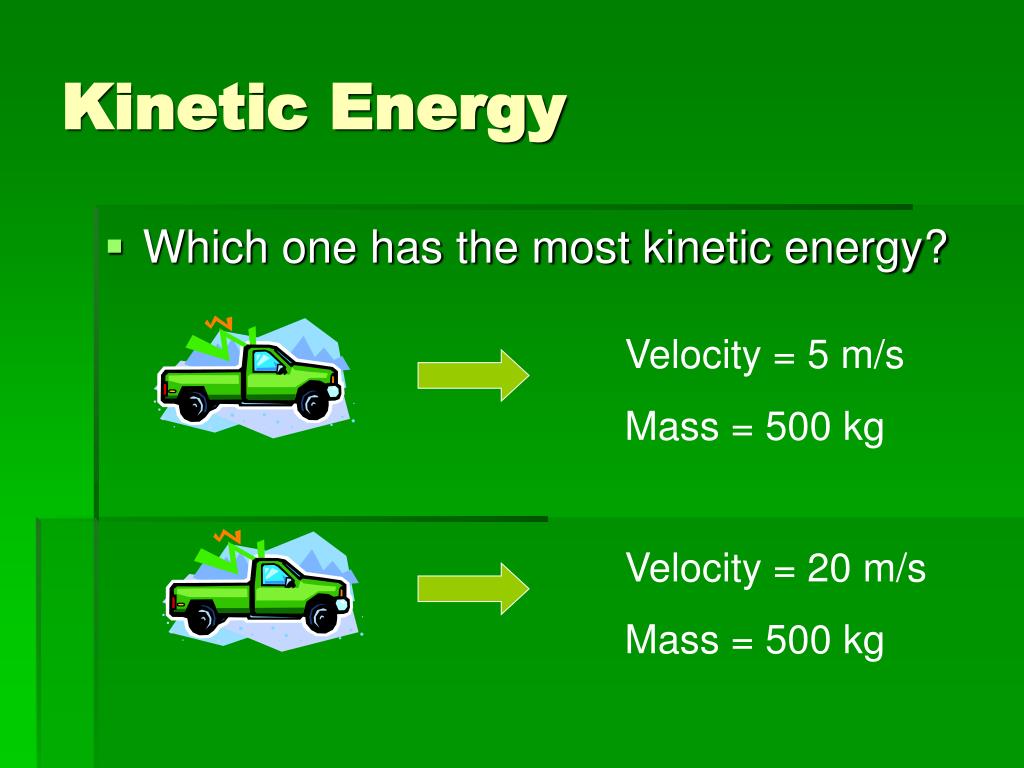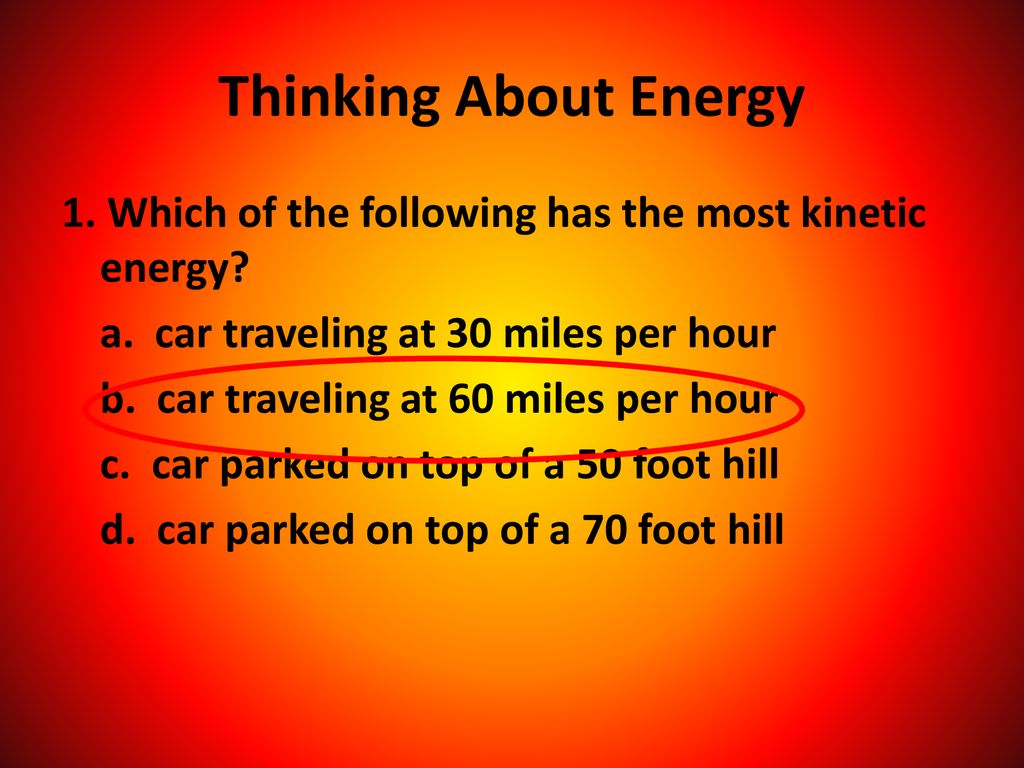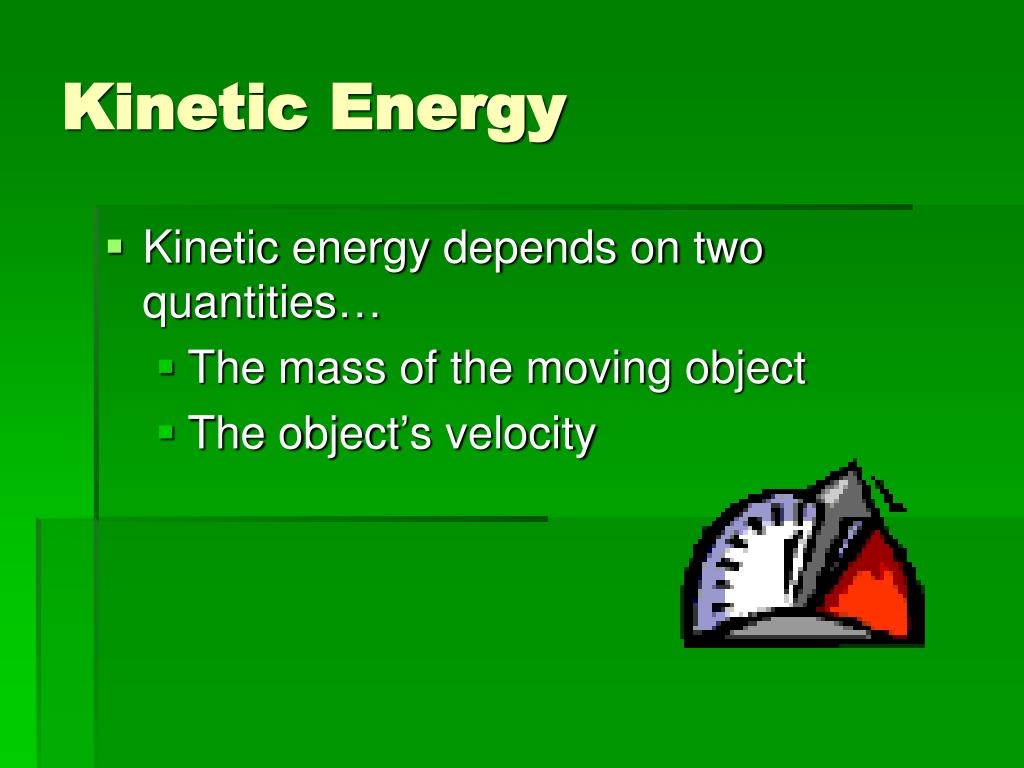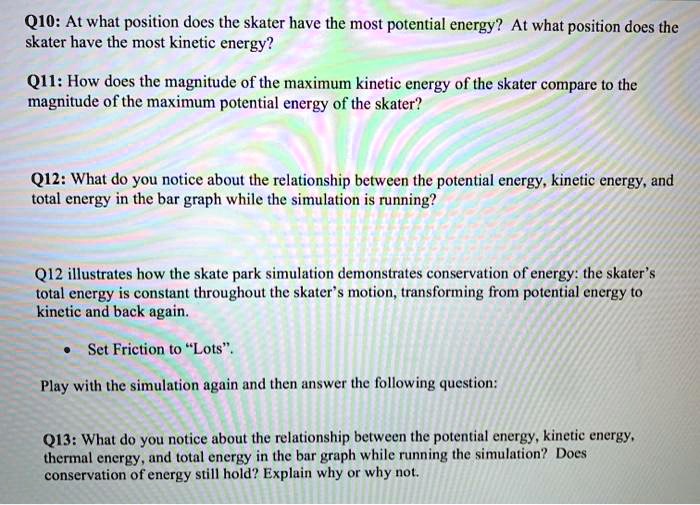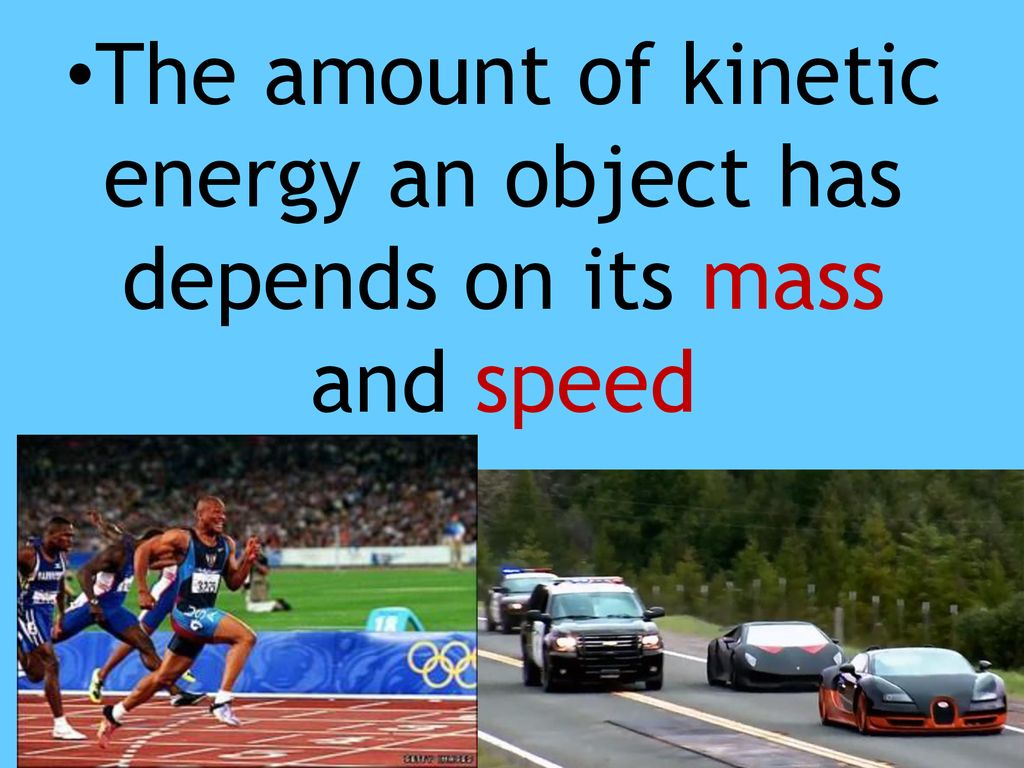Which Of The Following Has The Most Kinetic Energy

The question, "Which of the following has the most kinetic energy?" might seem simple, the answer depends entirely on the specific objects being compared. Kinetic energy, the energy of motion, is determined by both mass and velocity. Therefore, a seemingly small object moving at an incredibly high speed can possess significantly more kinetic energy than a much larger object moving slowly.
This concept, seemingly academic, has profound implications in fields ranging from astrophysics to engineering, influencing our understanding of everything from meteor impacts to the design of high-speed vehicles. Understanding kinetic energy is fundamental to grasping how energy is transferred and transformed in the universe. It impacts our daily lives more than we realize.
Understanding Kinetic Energy
Kinetic energy (KE) is defined as half the mass multiplied by the square of the velocity (KE = 1/2 * mv²). This formula highlights the critical relationship between mass and velocity in determining an object's kinetic energy. The squaring of the velocity term means that velocity has a much greater influence on kinetic energy than mass does.
Let’s consider a few hypothetical scenarios to illustrate this point. A bowling ball rolling slowly down a lane, a speeding bullet fired from a rifle, and a massive cargo ship traversing the ocean represent drastically different scales of mass and velocity. Determining which possesses the most kinetic energy requires a careful comparison of their respective values.
Scenario 1: Bowling Ball vs. Bullet
Imagine a 7 kg bowling ball rolling at 5 meters per second. Its kinetic energy would be calculated as 1/2 * 7 kg * (5 m/s)² = 87.5 Joules. Now, consider a bullet with a mass of just 0.01 kg (10 grams) traveling at 500 meters per second.
The bullet's kinetic energy would be 1/2 * 0.01 kg * (500 m/s)² = 1250 Joules. Despite being significantly smaller in mass, the bullet possesses far more kinetic energy due to its dramatically higher velocity. This difference explains the bullet's destructive power upon impact.
Scenario 2: Car vs. Airplane
A car traveling on the highway typically weighs around 1500 kg and might travel at 30 m/s (approximately 67 mph). Its kinetic energy can be determined to be 1/2 * 1500 kg * (30 m/s)² = 675,000 Joules. Now, a large commercial airplane such as a Boeing 747 weighs around 180,000 kg and travels at a cruising speed of around 250 m/s (approximately 560 mph).
The plane's kinetic energy, calculated as 1/2 * 180,000 kg * (250 m/s)² = 5,625,000,000 Joules, vastly surpasses that of the car. The significant difference in mass and, crucially, velocity, results in an astronomical disparity in kinetic energy.
Scenario 3: Asteroid vs. Spacecraft
Consider a small asteroid with a mass of 1,000,000 kg traveling through space at 10,000 m/s. This asteroid's kinetic energy would be 1/2 * 1,000,000 kg * (10,000 m/s)² = 5 x 1013 Joules. Comparatively, a spacecraft like Voyager 1, with a mass of around 722 kg, travels at approximately 17,000 m/s.
The spacecraft's kinetic energy would be 1/2 * 722 kg * (17,000 m/s)² = 1.04 x 1011 Joules. Despite the spacecraft's higher velocity, the sheer mass of the asteroid grants it substantially more kinetic energy. This also explains the catastrophic damage it will do if it collide with Earth.
Real-World Applications and Implications
The understanding of kinetic energy is not merely a theoretical exercise. It is vital in many real-world applications. For instance, engineers use kinetic energy principles in designing safer vehicles.
Moreover, understanding of kinetic energy is crucial for assessing the potential damage from natural disasters like hurricanes and tsunamis. Scientists analyze the kinetic energy of these phenomena to predict their impact and develop effective mitigation strategies.
In the field of renewable energy, harnessing kinetic energy is fundamental to wind and hydro power generation. Wind turbines convert the kinetic energy of the wind into electricity, while hydroelectric dams utilize the kinetic energy of flowing water.
Conclusion
In answering the initial question, "Which of the following has the most kinetic energy?", it's important to avoid making assumptions based solely on size or apparent speed. A comprehensive comparison requires careful consideration of both mass and velocity.
The scenarios presented demonstrate that even a small object moving at high speed can possess significant kinetic energy. This explains why seemingly small meteoroids burn up in the atmosphere. A larger, slower moving object may have less, but the overall potential damage is higher due to their masses and velocity.
Ultimately, understanding kinetic energy is essential for comprehending the dynamics of the world around us. From understanding the impact of asteroids to harnessing the power of the wind, kinetic energy plays a crucial role in shaping our understanding of the universe and driving technological advancements.

